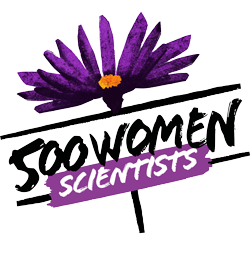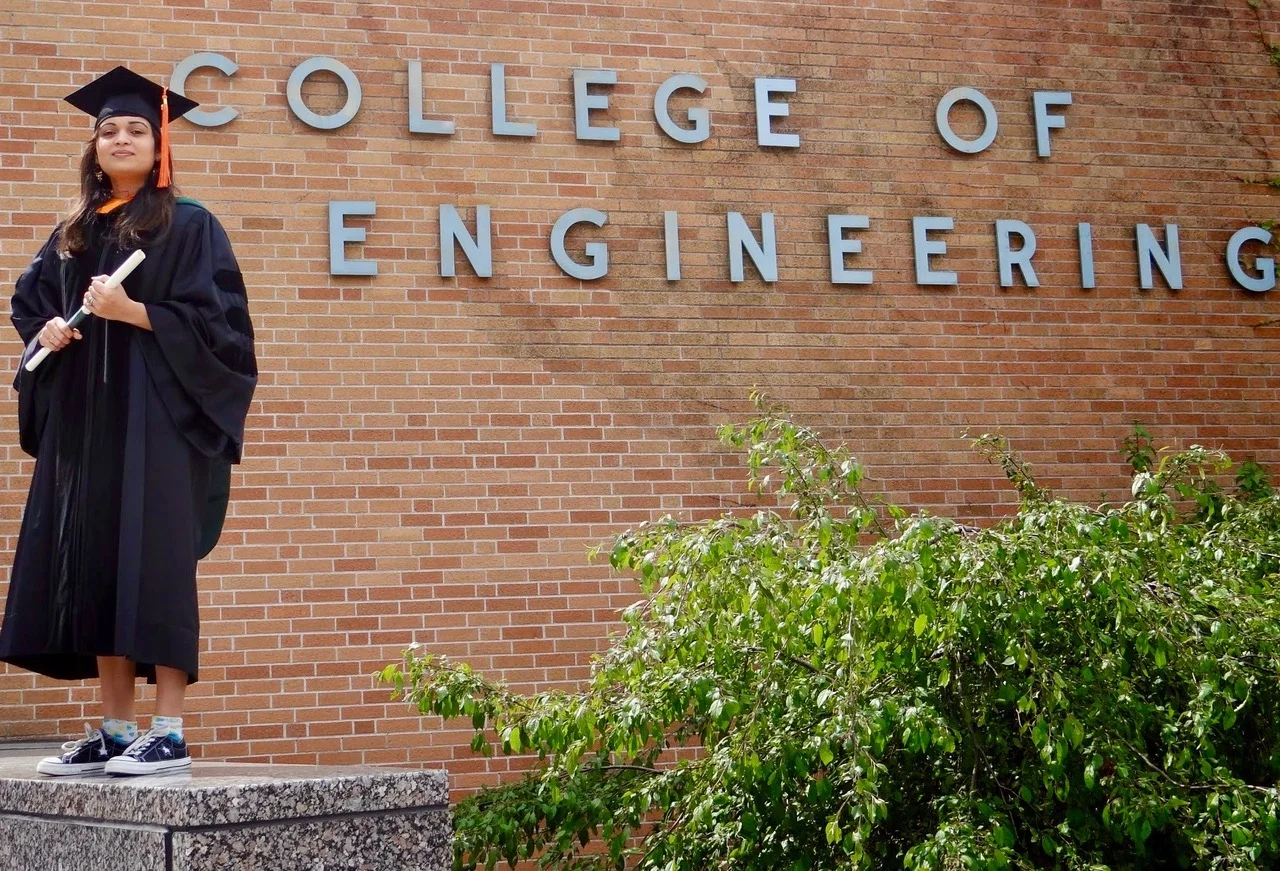This week on Meet a Scientist, we meet Dr. Pragnya Eranki, a Chemical Engineer with expertise in sustainable technologies. She currently works at the Colorado School of Mines as research faculty in civil and environmental engineering, as well as developing a Diversity, Inclusion, and Access Council. Learn about Pragnya's work on sustainability and DI&A issues — and her passion for reading and dancing!
When did you first identify as a scientist or engineer? What does your research center on today?
I started to identify as a scientist/engineer really only once I started pondering issues surrounding women in STEM. Looking back, I realize that throughout undergraduate and graduate school, I suffered from a severe case of the imposter syndrome being in the extremely male-dominated field of Chemical Engineering. Becoming aware of this challenge and managing it has made me realize that I am indeed a scientist/engineer and my research is important. However, I don’t deny feeling a great sense of accomplishment the day I completed my Doctoral degree — not even my inner imposter could stop me from feeling this!
As Research Faculty at Colorado School of Mines, my research centers on two broad areas: (1) sustainability and (2) diversity, inclusion & access (DI&A) in STEM. In my sustainability research, I seek and deliver solutions to overarching sustainability challenges in diverse sectors with an integrated systems-wide focus; some of these sectors include renewable energy, bioproducts, industrial products and processes, and agriculture. I am an expert in life cycle assessment (LCA), specifically its applications; this is a sustainability tool used mainly to assess the environmental impacts of virtually any product, process or system. This tool helps to identify impacts such as global warming potential, and eutrophication (related to algal blooms due to excessive nutrients in water bodies), among several other vital indicators of environmental health. This is a highly multi-disciplinary and collaborative research area with applications in myriad fields.
My DI&A research focuses on minorities in STEM (addressing intersectionality between race, sexual-orientation, gender), principally identifying individual (communication challenges, imposter syndrome) and institutional (implicit biases) barriers. My research includes data collection and analysis, and seeking best practices and solutions to compel and improve DI&A performance in workplaces. This year, we have been working on assessing the climate, developing a campus-wide DI&A Council, and gathering best practice-based recommendations for a DI&A plan at Colorado School of Mines.
How did you become interested in sustainability and energy? What do you think will be the biggest hurdles to a sustainable economy?
Even while studying Chemical Engineering during my undergraduate years, I was interested in looking at systems from a fresh perspective. Novel technologies that make smart use of resources with minimal wastes, and techniques to enhance efficiencies in existing systems had always interested me. Perhaps even without knowledge of the exact terminology back then, I was drawn to industrial ecology and sustainability. Subsequently, when I was presented with the opportunity in graduate school to match up with a research project, it seemed a natural fit for me to work with a group involved in cellulosic biofuels research, especially modeling the sustainability of such systems. This research brought together all elements that intrigued me — new technologies, enhancing efficiencies and addressing sustainability!
While the challenges to creating and maintaining sustainable systems and economies are complex, one of the main components to this challenge is consistency. Everybody needs to get on the same page about how living sustainably is the only way to live. We must make a choice to strategically utilize the limited resources available to us, and must dispel the illusion that such resources are forever at our disposal. The problem is that several countries and individuals still live under the impression that issues surrounding the economy, society and the environment are mutually exclusive, and that working on that triple bottom line of sustainability isn’t worth the time or effort. Consumerism and indiscriminate waste generation is the norm in today’s world. If sustainability became the norm instead of the exception — and if it were integrated into systems instead of being tacked on as an afterthought — governments, companies, businesses, and individuals must assume stewardship in addressing sustainability in our products and choices.
Another big hurdle is not comprehending the urgency for such economies/systems and not investing in addressing challenges to building sustainable economies. For instance, because impacts of climate change are not entirely obvious or visible, it makes them seem like they will materialize a very long time from now. (This is false. Many of these events are happening now!) We cannot encourage shortsightedness when it comes at a heavy cost.The irrational and seemingly increasing mistrust in Science and Research and highly unstable political climates exacerbate these challenges.
You were recently hired to work on Diversity, Equity, and Inclusion at Colorado School of Mines, a school with an engineering focus; what do you think are some solutions to address challenges facing women in STEM?
There are systemic inequities that need to be addressed for women and underrepresented minorities in the STEM fields. In the case of women, I believe that these inequities arise from deep-seated expectations around traditional gender roles for men and women that are still rampant in societies. These biases can be ousted and leaks can be caulked only if the entire pipeline is examined and rectified at all stages, starting at K-12 and leading into college through advanced careers for women in STEM. We need to see a change in collective cultures at schools, colleges, and universities, as well as in the workplace. There are several important factors. Girls must understand they are equally talented and “smart” enough to pursue Science as boys. Positive and well-known role models in STEM must become ever-present to girls without them having to go to great lengths to seek out such role models. Equal pay must become standard. Stricter measures must be adopted to expunge sexual harassment from workplaces.
On an individual level, I think it is important for women to acknowledge that such inequities and biases exist, even if they may not have personally experienced them. I think it is essential for women to seek out formal and informal mentors, role models, and allies. On the other hand, it is essential for women in leadership positions to actively support and provide guidance and advice to their protégés. I am optimistic that women in STEM will make strides through these institutional and cultural changes with a community of supporters and allies.
Perhaps the most important question we ask of all, when you're not science-ing, teaching, or doing communication, what do you do to unwind?
I’ve loved to read for as long as I can remember! I read a lot of fiction, but I’m constantly trying to broaden my horizons by reading compelling nonfiction as well. I have Yuval Harari’s Sapiens, Neil Tyson’s Astrophysics for People in a Hurry, and as a tribute to Stephen Hawking, his Brief History of Time lined up. At any given time you will find me juggling at least 3 books, usually a 2:1 mix of fiction to nonfiction. Last year I completed my reading challenge of 56 books; each year I intend to up this number by one. I use GoodReads religiously to track my reading, and I make really good use of my amazing County library’s app. I’ve recently discovered the joy of audiobooks. I’m currently listening to the entire Harry Potter series, which is a whole new experience in itself (I’m a total Potterhead). Fun fact: I speed-listen to audiobooks at 1.5-2 times the speed at which they’re recorded, and I get through some books rather quickly!
I also love to dance. I was trained in Indian Classical dance as a child. Lately, I do Zumba to get fit while also doing what I love. I am a huge trivia fan and my dream is to be on jeopardy someday, so I play along to at least one jeopardy episode everyday. And finally, I absolutely love to travel and experience different cultures, art, and architecture around the world. My husband and I try to get away whenever our schedules permit. We’ve been to a few countries in Europe, Asia, North and South America. Our goal is to eventually visit all Continents.
Dr. Pragnya Eranki is an expert in environmental sustainability & life cycle assessment (LCA). Her research interest is in the cross-disciplinary, overarching area of sustainability in sectors such as bio-products, energy, agriculture, and industrial products. She is also actively engaged in Diversity, Inclusion & Access (DI&A) issues and Science Communication in STEM. She leads research on best practices and data analysis mainly pertaining to DI&A issues in higher education and corporate sectors, and in Science Communication particularly for women in STEM. She is a Chemical Engineer with a Doctoral degree from Michigan State University, following which she completed her post-doctoral training at the University of Virginia and Clemson University. In her previous position, she worked as the Deputy Director of Research at the Institute for Sustainability at Clemson University. She is currently Research Faculty in Civil & Environmental Engineering at Colorado School of Mines.





